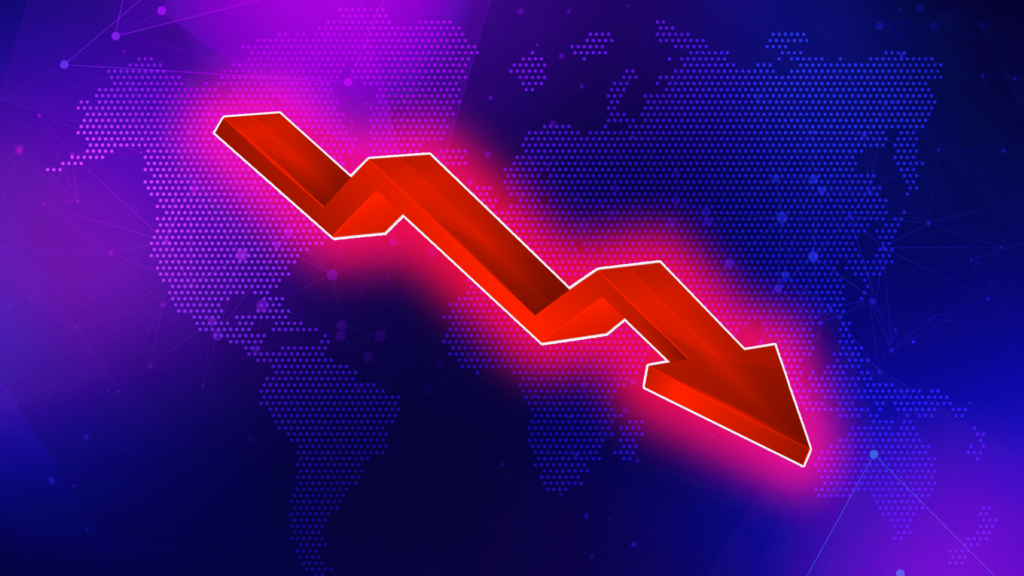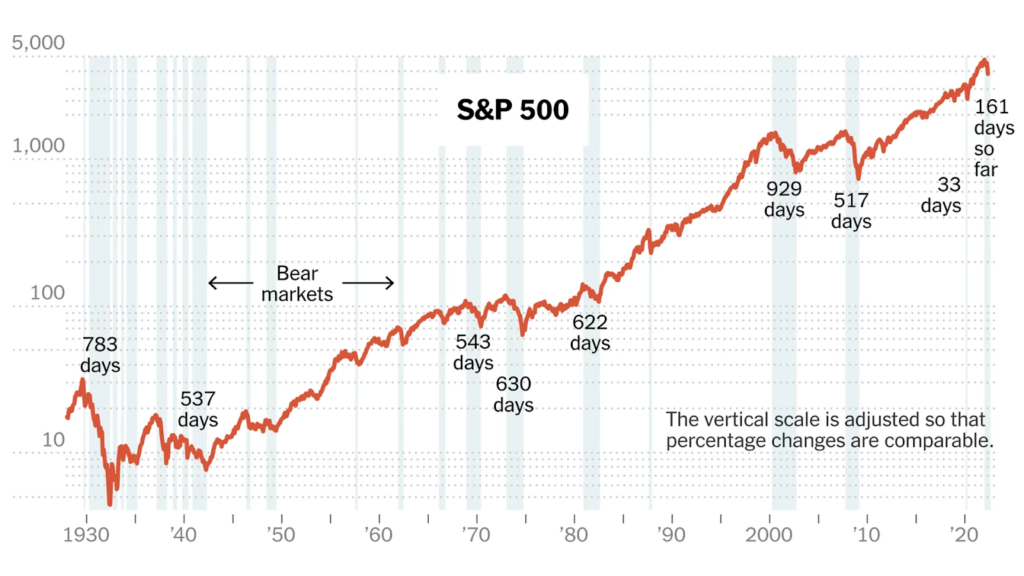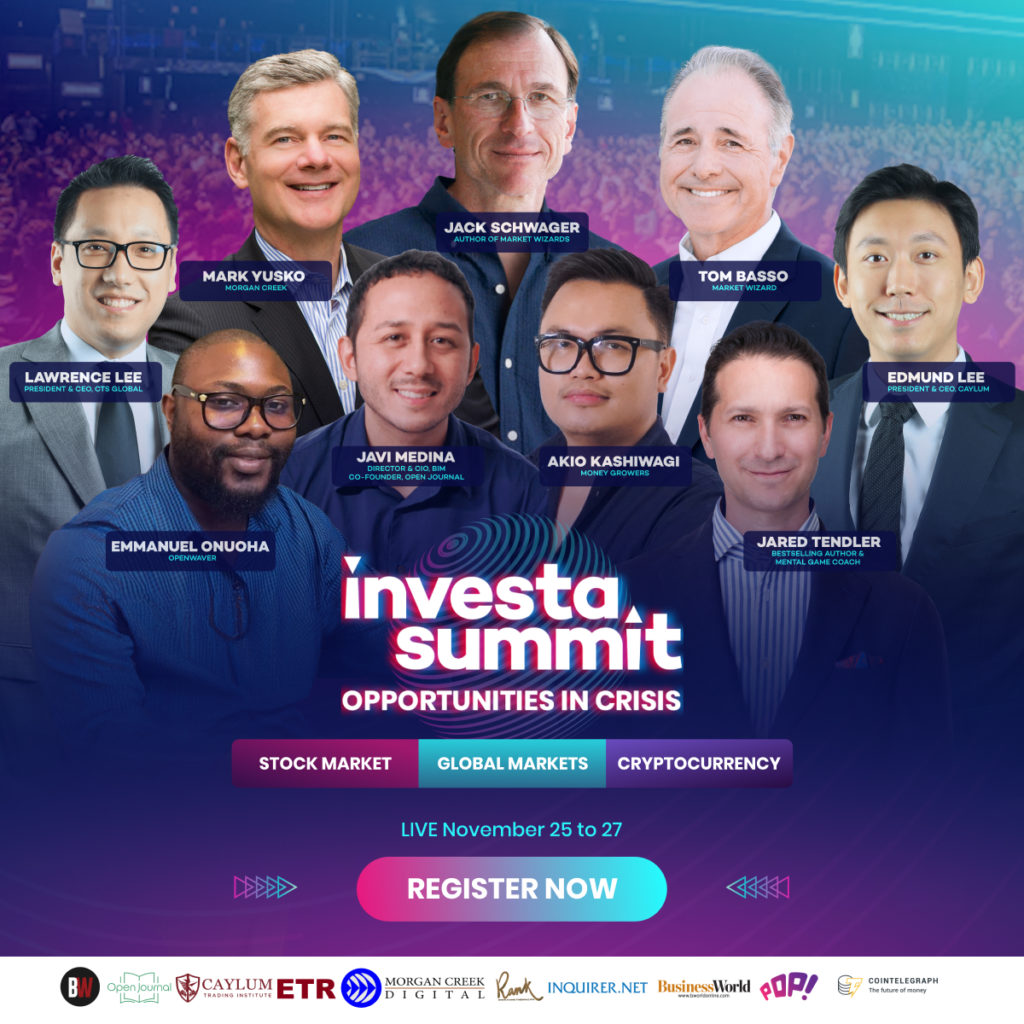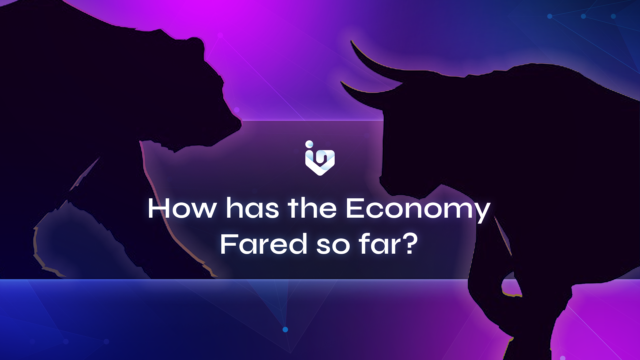The economy is currently in a bad situation. During the past 3 quarters of 2022, the PSEI and S&P 500 dropped nearly 16.71% and 23.64% respectively. If you want to track these markets, you can head on over to Investagrams. Both local and global equities sank deeper into bear market territory as investors fear rising interest rates and possible recessions which could devastate the economy.
Investors start to feel concerned and stressed about what to do given the current market conditions due to the abundance of FUD and the accompanying market volatility. For many investors, especially those who are just getting started, this is challenging. Nevertheless, it is wise to remember that market crashes are among the best times to buy. During a crisis, stock prices are much lower, allowing you to stock up on reliable investments for a discounted price. You will then benefit when the market eventually recovers.

What’s Going on in the Local Economy?
The USDPHP exchange rate has reached a record high and is still rising. On September 27, the exchange rate rose to PHP59 to USD, decreasing its value by almost 14% so far this year.
The International Monetary Fund anticipates that the Philippine economy would grow more slowly this year than initially expected as a result of the global economic slowdown and tightening financial conditions (IMF)
The IMF predicted that the economy will grow by 6.5%, which was less than its earlier prediction of 6.7% but still in line with the 6.5% to 7.5% growth objective set by the Philippine government. The economy was predicted to grow by 5.0% next year, which was unchanged from its July prediction but significantly less than the 6.3% growth predicted in April.
Inflation in the Philippines exceeded the central bank’s comfort zone of 2% to 4% for the period of January to August, averaging 4.9%. In order to battle inflation, the Bangko Sentral ng Pilipinas (BSP) has hiked interest rates a total of 225 basis points, raising the policy rate (PHCBIR=ECI) to 4.25%.

What’s Going on in the Global Economy?
It was projected that the global economic recovery from the pandemic would continue in 2022 and 2023, aided by advancements in the endeavor to vaccinate everyone around the world, supportive macroeconomic policies in the main nations, and favorable financial conditions.
However, the war in Ukraine will slow global growth and exacerbate inflationary pressures, creating a fresh negative supply shock for the world economy. The impacts of the war will be felt in many different ways and are likely to change as the fighting continues.
According to the WTO, when growth slows in major economies for various reasons, demand for imports is anticipated to decline.
High energy costs in Europe as a result of Russia’s invasion of Ukraine will reduce consumer expenditure and raise manufacturing expenses.
The tightening of monetary policy in the United States will have an impact on spending in industries where interest rates are significant, such as housing, automobiles, and fixed assets.
Along with sluggish external demand, COVID-19 breakouts and production interruptions are still a problem for China.
Overall energy price increases in August increased by 78% from the previous year. Food costs climbed by 11%, grain costs by 15%, and fertilizer costs by 60%.
In recent months, a lot of currencies have depreciated against the dollar, which is another factor raising the price of food and fuel.

History of Bear Markets
Bear Markets are a normal thing when it comes to the world of investing. Before the Covid-19 crash, there were multiple instances of bear markets in the economy.
Take for example the stock market crash of 1929 which started the great depression. Stocks started to decline in September of that year, but in late October, on the 28th and 29th, there was a nearly 13% decline and a further almost 12% decline, respectively. Black Monday and Black Tuesday are widely recognized as the worst two days in history.
A few weeks later, the Dow experienced a 50% decline in value and started a protracted bear market. The market hit its absolute bottom in 1932, falling a startling 89% from its high.
One recent example would be the 2008 “Subprime Mortgage Crisis”. This collapse was the greatest since the Great Depression because of banks’ lax lending policies for mortgages. Government bailouts, new money injections into the economy, and historically low interest rates all contributed to the recovery.
The market did not recover for about 17 months. When it did, it began in 2009 and continued all the way to 2020, becoming one of the longest and most successful bull runs in history.

Bear Markets are an Opportunity
Bear markets are scary, and are probably one of the worst fears for some investors. However, as we take a look back at the history of bear markets, we can see how drastic the returns were for those who bought during the dip.
Profiting from bear markets may lower your costs and increase your return on investment. Because drops are a natural part of the market’s rise and fall, they typically bring opportunities.
History shows that bull markets always come after bear markets. This allows you to benefit from them especially if you are just starting out in the world of investing and have a long-term vision.
Take for example Oil tycoon J. Paul Getty who abided by a simple business formula: “Buy when everyone else is selling, and hold on until everyone else is buying.” Getty purchased Pacific Western Oil Company and shares of TideWater Associated Oil Company, the country’s ninth-largest oil company. Five years after buying Tide Water shares for $2.12, they were worth more than $20.
Long-term benefits from bear markets can be achieved by developing a mindset similar to that of Getty. Although they might be unsettling, downturn markets often give investors opportunities. You can uncover possibilities to make profitable investments or, at the absolute least, keep the ones you already have if you know where to search.

What can we learn from the Investa Summit
“Whether you have a small amount of money or a big amount of money, it really boils down to the financial values and the foundation of the person”, Javi Medina.
The Investa Summit brought together a unique group of speakers who are market experts, professional and institutional traders in their field, and people who have actually changed their lives through trading the stock market, Cryptos, and much more.
Talks about market mindset, mentality and psychology were one of the highlights of the event as we are currently facing an economic crisis. Those who are able to access the Investa Summit may apply the lessons learned from the resource speakers into their own trading plan.
“What’s required for you as a trader is obviously a high level of discipline in order for you to succeed”, Edmund Lee.
While in the bear market, it is not easy for traders and investors to keep a calm mindset. Expand your knowledge about the market and learn new earning opportunities to help you maximize your profits in Stock Market, Cryptocurrency, and Global Markets! We have invited top experts in the finance industry to give you valuable insights and tactics to help you achieve financial freedom.

